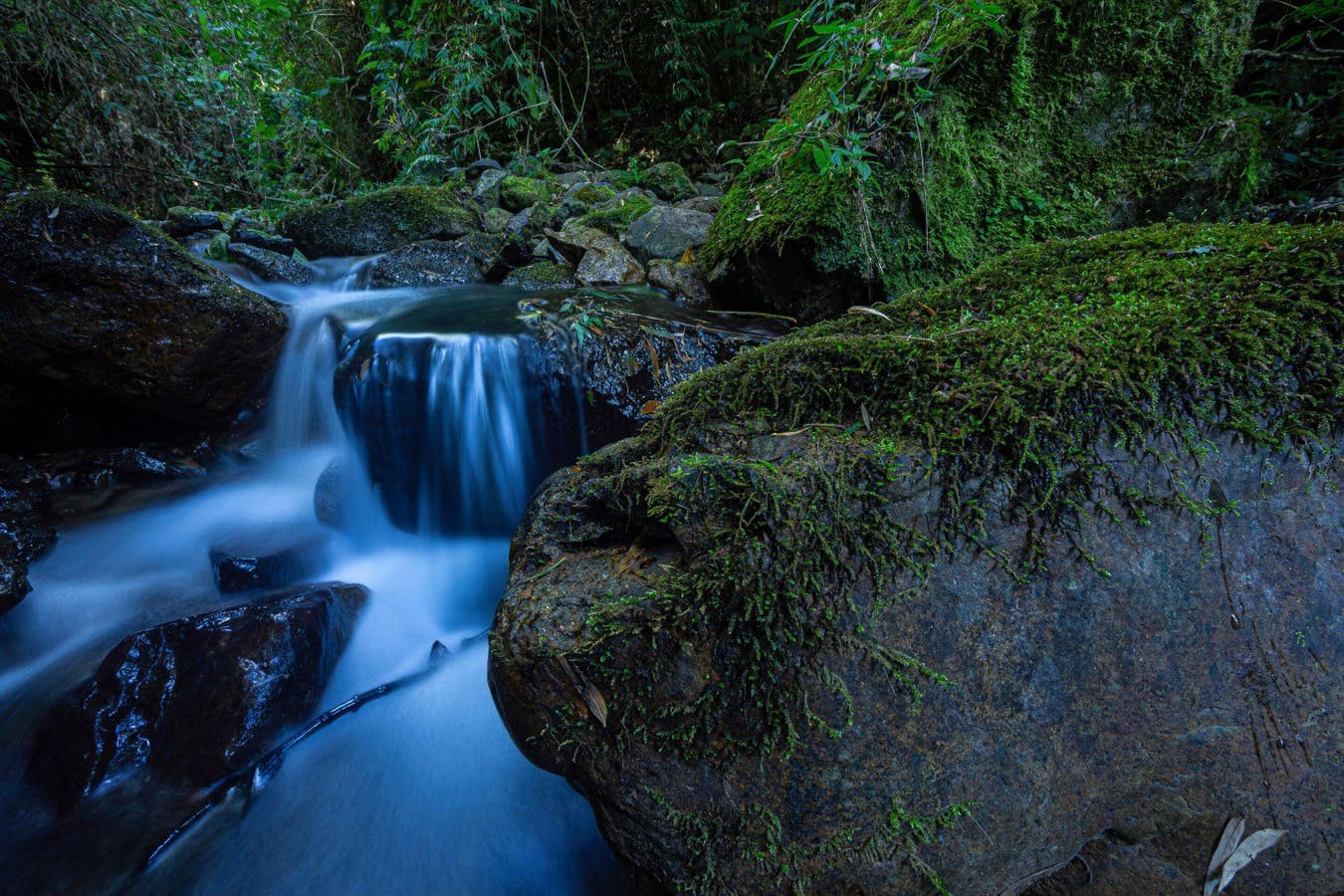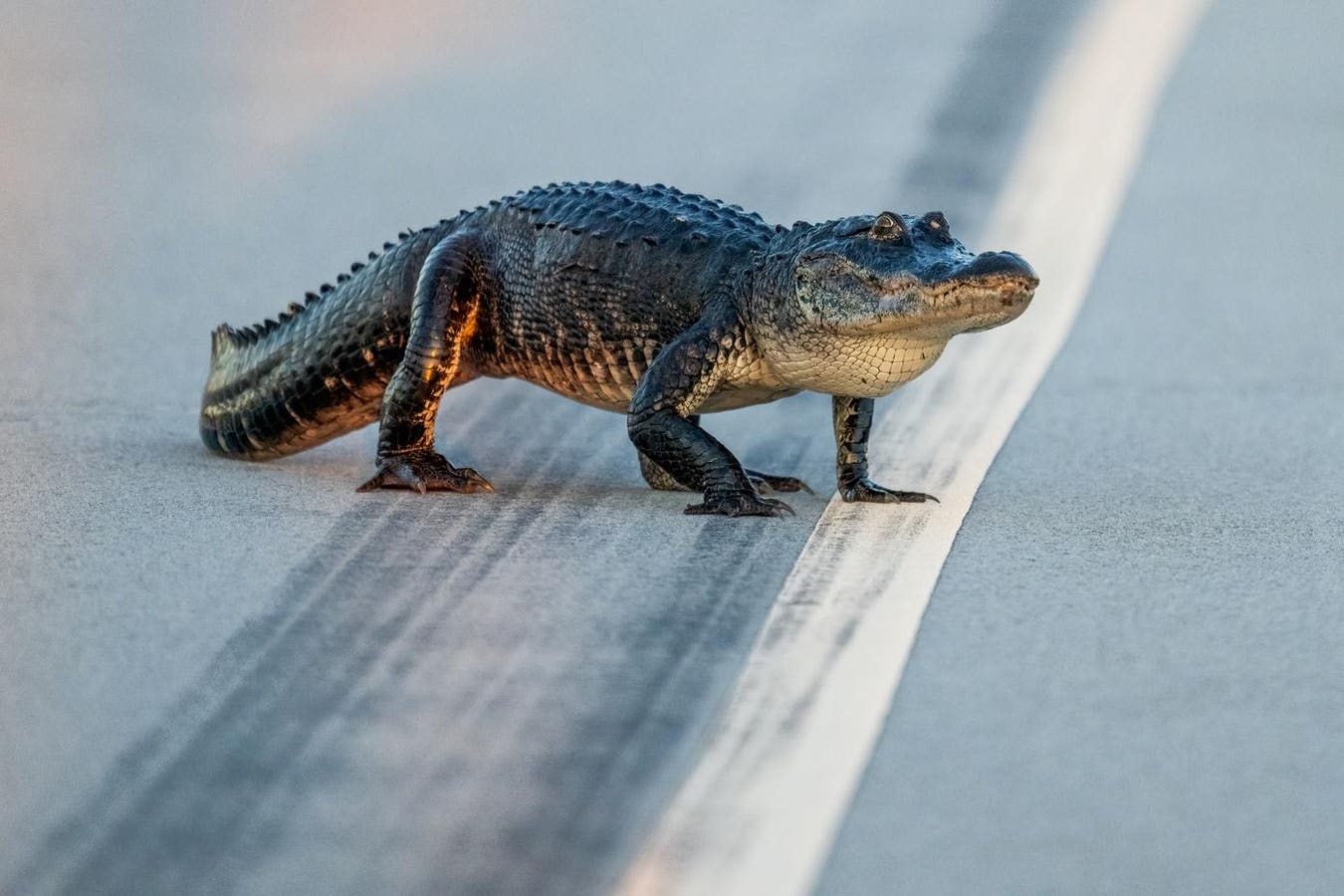These tiny frogs remind us of how little we know about the biodiversity of the Andes Mountains.
A stream in northern Peru that is close to where the bromeliad-dwelling frog, Cutin del yonque … More
An international team of scientists recently reported their discovery of three new species of frogs in the Andes. These elusive frogs were located high in the misty peaks of the Cordillera de Huancabamba, rugged and isolated terrain located in the far northwestern reaches of Peru (Figure 1). Significantly, just south of the Cordillera de Huancabamba lies one of the lowest mountain passes in the Andes: The Abra de Porculla, at 2145m (7037 feet) above sea level. This feature provides a dispersal pathway for organisms from the Amazon region to move westward to the Pacific lowlands and vice versa, thereby changing their natural biogeographic ranges.
“Going to the Amazon forest in Peru is perhaps the most joyful way to do your work. The chances to find so many frogs, lizards, snakes, turtles, and even caimans are really high, so one can’t help but get excited,” the study’s lead author, herpetologist and ecologist Germán Chávez, wrote in a guest blog. Dr Chávez is a Research Associate at the Centro de Ornitología y Biodiversidad.
Figure 1. Map showing localities of distribution of the new Pristimantis species. White square = P. … More
Between 2021 and 2024, Dr Chávez and collaborators conducted several surveys during both the rainy season (2021, 2023) and dry season (2023, 2024). They hiked steep treacherous trails for 5 and 6 hours in the darkness of night whilst combing through mossy forests and wet páramo as they searched four sites in the Cordillera de Huancabamba for the elusive amphibians.
“Exploring this area is more than fieldwork,” observed one of the study’s co-authors, herpetologist Karen Victoriano-Cigüeñas, “it’s an immersion into wilderness, culture, and resilience.”
“Many of these mountain ridges are isolated, with no roads and extreme terrain,” another of the study’s co-authors, herpetologist Ivan Wong, remarked in a statement. “The weather shifts within minutes, and the steep cliffs make every step a challenge. It’s no wonder so few scientists have worked here before. But that’s exactly why there’s still so much to find.”
Searching treacherous mountainous terrain for tiny frogs in the darkness of night. (Credit: Germán … More
“Active searches were performed by carefully scanning the ground, vegetation, and water edges using headlamps to detect amphibians,” the authors wrote in their study (ref). “Each survey was focused on multiple different microhabitats to ensure comprehensive coverage, with particular attention to riparian zones, streams and moist areas.”
As you probably can imagine, it was very difficult finding these frogs, but the team’s persistence paid off – after a series of short expeditions over a period of years, they had finally discovered three new species of frogs. After morphological revisions and genetic analyses, Dr Chávez and collaborators concluded that three frogs in this collection represent new species to science.
Composite photo: Left: Chingula Cutin (Pristimantis chinguelas), Middle: Elio’s cutin (Pristimantis … More
The Chingula cutin, Pristimantis chinguelas, is named in honor of Chinguelas Hill, in the farming community of Segunda y Cajas, where it was discovered. This frog is easily recognized by the long tubercles on the sides of its body. Its emits a high-pitched “peep” that can be heard echoing on humid nights.
Elio’s cutin, Pristimantis nunezcortezi, occurs in cool mountain streams in regenerating forest. Its black groin distinguishes it from the other new frog species. It was named in honor of conservation ornithologist Elio Iván Núñez Cortez, who was the Field Coordinator for Nature and Culture International in Peru and a passionate defender of the Huancabamba mountain range. Its call is so far unknown.
Cutin del yonque, Pristimantis yonke, is the smallest of the three new frogs. It was discovered nestled inside local bromeliads at nearly 3,000 meters in elevation. Its flattened body, pointed head, and grainy texture give it a unique appearance. This frog’s name is a tribute to the traditional Andean drink: “yonke,” which is a sugarcane spirit commonly consumed by locals to endure the highland chill so it’s a staple on hikes, camping trips, and at rural celebrations. Its call is unknown.
The genus, Pristimantis, is the most diverse group of amphibians with 619 species described so far. Pristimantis frogs are found throughout Central and South America, reaching their highest diversity in the tropical Andes, Ecuador and Peru. Recent studies suggest that the species richness of Pristimantis is underestimated because several cryptic species or species complexes may be hidden within its wide geographic distribution.
Although previous research studies have explored several areas of this region, large parts of the Cordillera de Huancabamba still remain unexplored.
Cordillera de Huancabamba in the northwestern Andes of Peru. (Credit: Germán Chávez)
Although newly described, these frogs’ future is uncertain. Dr Chávez and fellow explorers report that the frogs’ habitats are already experiencing degradation, fire damage, and encroachment from expanding agriculture and cattle ranching, as revealed by Global ForestWatch satellite images (more here). At this time it’s difficult to know what the conservation status of these frogs is, so the study’s authors recommend that the species be listed as Data Deficient under IUCN criteria.
“The Cordillera de Huancabamba is not just a remote range – it’s a living archive of biodiversity and cultural legacy,” another of the study’s co-authors, herpetologist Wilmar Aznaran, said in a statement. “And we’ve barely scratched the surface.”
Source:
Germán Chávez, Wilmar Aznaran, Ivan Wong, Karen Y. Victoriano-Cigüeñas, Luis A. García-Ayachi, Juan D. Valencia-Málaga, Jesús R. Ormeño, Michael Gulman, Ronal Sumiano-Mejía, Michelle E. Thompson, and Alessandro Catenazzi (2025). Over the top: Three new species of terrestrial breeding frogs (Anura, Terrarana, Pristimantis) from the highlands of the Cordillera de Huancabamba, northwestern Peru, Evolutionary Systematics 9(1):145-166 | doi:10.3897/evolsyst.9.148522
© Copyright by GrrlScientist | hosted by Forbes | LinkTr.ee
Socials: Bluesky | CounterSocial | LinkedIn | Mastodon Science | MeWe | Spoutible | SubStack | Threads | Tumblr | Twitter









